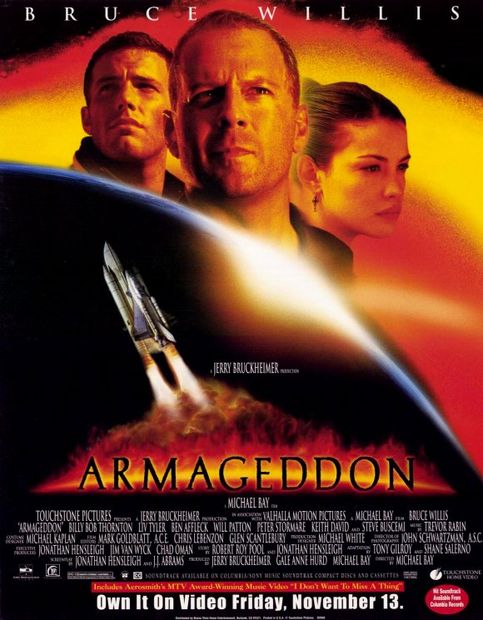
Fantasy vs Reality: no, Bruce Willis can't save the day, and neither can your government.
In the 1998 movie "Armageddon," Bruce Willis plays an oil-drilling platform engineer who leads a team that lands on an asteroid aimed at Earth, drills a hole into its center and explodes a nuclear device that splits the asteroid, saving the planet.
Could it actually happen?
Definitely not, say physics graduate students at the University of Leicester in England.
Leaving aside the question of whether we have spacecraft that could transport the drilling team to intercept the asteroid, the group of four students concluded that we simply don't have a big enough bomb to split the asteroid so that the two halves would pass by the Earth.
Ben Hall, Gregory Brown, Ashley Back and Stuart Turner devised a formula to calculate how much energy would be needed to split an asteroid of the size depicted in the film. They reported in
two related
papers in the University of Leicester
Journal of Special Physical Topics that
it would require 800 trillion terajoules of energy to split the asteroid in two with both pieces clearing the planet. Unfortunately, the largest nuclear bomb known, a Russian monster known as Big Ivan,
yields only 418,000 joules. Hence, they said,
the project would require a bomb a billion times as powerful to save the Earth.
Moreover, the asteroid would have to be split at a distance of about 8 billion miles from Earth. That is, coincidentally, about the maximum distance at which such an asteroid could be detected,
leaving no time for the group to assemble and travel to the body -- much less to have time for meaningful encounters with Ben Affleck and Liv Tyler along the way.
Co-author Hall, 22, said a more likely possibility would be to attach a propulsion device to the asteroid, but that also would require very early detection and a massive device.
"I really enjoyed the film 'Armageddon' and up until recently never really considered the plausibility in the science behind the movie," Hall said. "But after watching it back, I found myself being more skeptical about the film in many areas."
Leicester University physicist Mervyn Roy, who oversaw the students, conceded that the study was "a bit off-the-wall," but noted that to be a research physicist, "you need to show some imagination, to think outside the box."
They wrote: " They reported in two related papers in the University of Leicester Journal of Special Physical Topics that it would require 800 trillion terajoules of energy to split the asteroid in two with both pieces clearing the planet. Unfortunately, the largest nuclear bomb known, a Russian monster known as Big Ivan, yields only 418,000 joules. Hence, they said, the project would require a bomb a billion times as powerful to save the Earth."
OK, so a trillion is 10e12 and a terajoule is 10e12joules; so, 800 trillion terajoules is 8 x 10e26 joules.
Now, 418,000 joules is 4.18 x 10e5 joules; a billion is 10e9so a billion times Big Ivan is 4.18 x 10e14 and 10e14 is A LOT smaller than 10e26 so somebdy